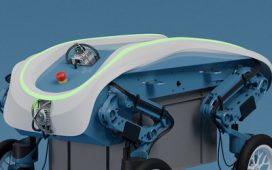us delays venice biennale 2026 selection process
In the United States, Venice Art Biennale 2026 preparations began with an absence — no grant posting, no artist selection, and no official word. For those familiar with the complex process required to mount the United States Pavilion at the world’s preeminent art exhibition, this silence was alarming. In his recent Vanity Fair column, journalist Nate Freeman follows the bureaucratic lapses and ideological shifts that brought the art world to the brink of believing the US might sit this one out for the first time since the Second World War.
Historically, the process begins at least eighteen months in advance with the opening of a grant application portal. By early spring 2025, with just twelve months to go, the portal had still not launched. Many in the museum world feared that the United States’ Biennale submission was already impossible to mount. Veteran curators like Kathleen Ash-Milby, who co-commissioned artist Jeffrey Gibson’s 2024 pavilion, shared concern that even if the portal were to open imminently, there would be no time left to plan, fundraise, and install a world-class exhibition in the Giardini.
Nate Freeman reported that behind the bureaucratic lag was a deeper unease tied to changes in the federal agencies responsible for the pavilion. The Bureau of Educational and Cultural Affairs (ECA), head the State Department branch overseeing cultural exchange, remained without a permanent assistant secretary. Its interim leadership, now under Trump-aligned figure Darren Beattie, raised new concerns about the ideological criteria shaping this year’s selection process. Historically apolitical on paper, the pavilion has now become a subtle battleground for defining what ‘American values’ in art might look like under a changing administration.

‘the space in which to place me,’ Jeffrey Gibson, US Pavilion, Venice Biennale 2024 | image © Timothy Schenck
portal opens with new ideological requirements
When the portal finally went live — curiously just hours after Freeman’s inquiries to the State Department on Wednesday, April 30th — the new guidelines revealed dramatic edits. Gone is the 2023 emphasis on ‘equity and underserved communities.’ In its place is a directive that chosen artists must ‘advance international understanding of American values,’ with language echoing policy preferences from Trump’s first term. This shift signaled a narrowing of the selection pool and a sharp pivot from the expansive, inclusive mission that defined past pavilions — and once defined the American spirit.
Also new were stipulations for ‘monitoring site visits,’ suggesting close oversight of curatorial autonomy, alongside ambiguous definitions of what constitutes a ‘non-political’ project. Where previous language encouraged representing the diversity of American life, the updated text now states that applicants must not ‘operate any programs promoting Diversity, Equity, and Inclusion that violate any applicable anti-discrimination laws.’ Freeman’s reporting highlights how such language reshapes the international image the US intends to project.
With the application window’s late opening, Nate Freeman suggests the process is running on adrenaline. Past curators are already warning that the shortened timeframe may preclude a nuanced or ambitious presentation. What should be an eighteen-month endeavor now risks becoming a rushed, reactive exhibition shaped more by political conditions than curatorial vision.

‘the space in which to place me,’ Jeffrey Gibson, US Pavilion, Venice Biennale 2024 | image © Timothy Schenck










